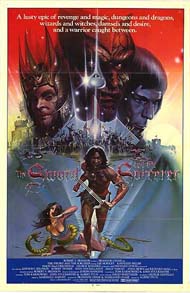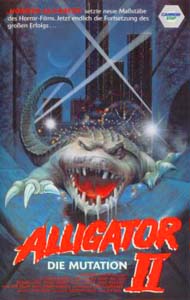

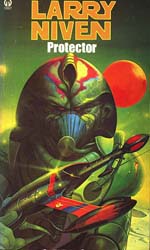
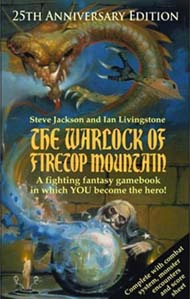
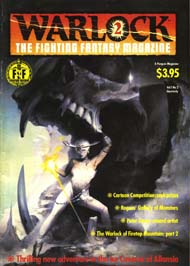
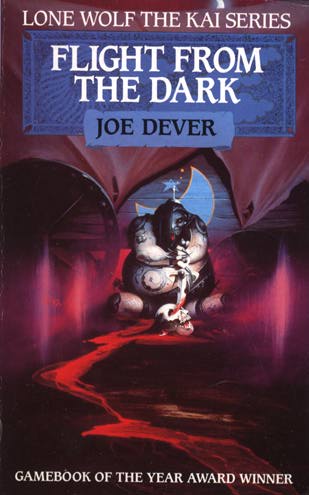
![]() BEGINNINGS . . . . . .
BEGINNINGS . . . . . .
![]() Peter Andrew Jones is a contemporary British artist and
illustrator
born into the relative poverty of post-war Britain in Islington, North
London in 1951, son of the late Reginald and Catherine Jones. His
father was a skilled engineer, and Peter himself has always had a
fascination with engineering, a fact which undoubtedly had an influence
on the hundreds of imaginative paintings for which he became
internationally famous, particularly in the genres of aviation, science
fiction and fantasy.
Peter Andrew Jones is a contemporary British artist and
illustrator
born into the relative poverty of post-war Britain in Islington, North
London in 1951, son of the late Reginald and Catherine Jones. His
father was a skilled engineer, and Peter himself has always had a
fascination with engineering, a fact which undoubtedly had an influence
on the hundreds of imaginative paintings for which he became
internationally famous, particularly in the genres of aviation, science
fiction and fantasy.
![]() ROOTS AND INFLUENCES
ROOTS AND INFLUENCES
![]() Peter showed interest in the visual arts from a very early
age: he
described the post-war London of his boyhood as "grey" with little for
children to do, and he took to drawing cartoon characters, such as Fred
Flintstone, and painting snow scenes to "colour his world". During
holidays in the late 1950s at Leven in Scotland (his mother's home
town) the seeds of a life-long love of aviation and space technology
were sown as he watched sleek, shiny, silver fighter aircraft flying
over the Firth of Forth from RAF Leuchars. This love deepened in the
early 1960s when he discovered artist Roy Cross's illustrations on
commercial Airfix plastic construction kits.
Peter showed interest in the visual arts from a very early
age: he
described the post-war London of his boyhood as "grey" with little for
children to do, and he took to drawing cartoon characters, such as Fred
Flintstone, and painting snow scenes to "colour his world". During
holidays in the late 1950s at Leven in Scotland (his mother's home
town) the seeds of a life-long love of aviation and space technology
were sown as he watched sleek, shiny, silver fighter aircraft flying
over the Firth of Forth from RAF Leuchars. This love deepened in the
early 1960s when he discovered artist Roy Cross's illustrations on
commercial Airfix plastic construction kits.
![]() At school he continued to pursue his interest in art, mainly
to cope
with a dislike of more formal studies such as mathematics, and won
school prizes for his work. Sunday visits with his parents to London's
National and Tate Galleries provided further inspiration for his
ever-growing awareness of the world of art, and the lives of artists.
At school he continued to pursue his interest in art, mainly
to cope
with a dislike of more formal studies such as mathematics, and won
school prizes for his work. Sunday visits with his parents to London's
National and Tate Galleries provided further inspiration for his
ever-growing awareness of the world of art, and the lives of artists.
![]() In his late teens he shunned school careers advice to "join
the
Parachute Regiment because of his outgoing personality", or to "become
a North Sea Trawlerman". With the encouragement of his art teacher,
Robert Spearman, a hugely talented artist in his own right, Peter
applied for, and subsequently attended, St. Martin's School of Art (now
Central St. Martins) in London in 1970. He graduated in 1974 with an
honours degree. Robert Spearman had taught Peter at adult evening
institute life drawing classes as a condition of pre-art school
tuition, and he also taught Peter the basics of classical painting and
drawing.
In his late teens he shunned school careers advice to "join
the
Parachute Regiment because of his outgoing personality", or to "become
a North Sea Trawlerman". With the encouragement of his art teacher,
Robert Spearman, a hugely talented artist in his own right, Peter
applied for, and subsequently attended, St. Martin's School of Art (now
Central St. Martins) in London in 1970. He graduated in 1974 with an
honours degree. Robert Spearman had taught Peter at adult evening
institute life drawing classes as a condition of pre-art school
tuition, and he also taught Peter the basics of classical painting and
drawing.
![]() CAREER LAUNCH
CAREER LAUNCH
![]() In 1973, during the second year of his graphic design course
at St.
Martins, a college friend, David Case (who later went on to become head
of design at the Financial Times) was reading a Panther Books paperback
edition of science fiction author EE "Doc" Smith's "Triplanetary".
David suggested to Peter, "Read it, it'll blow your mind". Peter bought
a copy and later, during a regular session with his tutor, visiting
lecturer and illustrator Fritz Wagner, the latter co-incidentally
suggested that, because of Peter’s “highly developed skill
of rendering realistic imagery” he might consider painting things
that don't actually exist, as in science fiction stories.
In 1973, during the second year of his graphic design course
at St.
Martins, a college friend, David Case (who later went on to become head
of design at the Financial Times) was reading a Panther Books paperback
edition of science fiction author EE "Doc" Smith's "Triplanetary".
David suggested to Peter, "Read it, it'll blow your mind". Peter bought
a copy and later, during a regular session with his tutor, visiting
lecturer and illustrator Fritz Wagner, the latter co-incidentally
suggested that, because of Peter’s “highly developed skill
of rendering realistic imagery” he might consider painting things
that don't actually exist, as in science fiction stories.
![]() Simultaneously another visiting lecturer, Gerry Downes,
impressed by
Peter’s ability to render realistic images, suggested a meeting
with Doreen Scott, Art Editor at Puffin Books. Within a month,
following a preliminary trial piece for Scott, Peter produced his first
commercial science fiction work for Puffin Books, the cover art for
Penelope Farmer's ‘A Castle of Bone’, and within a few
weeks he was also creating covers for Panther Books. So even before
leaving St. Martin's School of Art in 1974, Peter’s career had
taken off with a bang, and he very quickly earned respect as one of the
foremost illustrators of the science fiction genre during the 1970s.
Simultaneously another visiting lecturer, Gerry Downes,
impressed by
Peter’s ability to render realistic images, suggested a meeting
with Doreen Scott, Art Editor at Puffin Books. Within a month,
following a preliminary trial piece for Scott, Peter produced his first
commercial science fiction work for Puffin Books, the cover art for
Penelope Farmer's ‘A Castle of Bone’, and within a few
weeks he was also creating covers for Panther Books. So even before
leaving St. Martin's School of Art in 1974, Peter’s career had
taken off with a bang, and he very quickly earned respect as one of the
foremost illustrators of the science fiction genre during the 1970s.
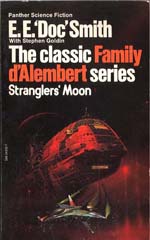
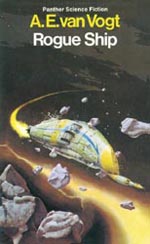
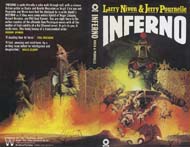
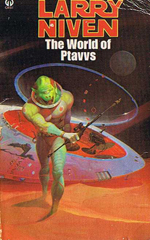

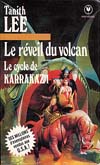
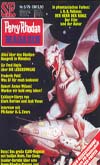
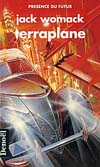
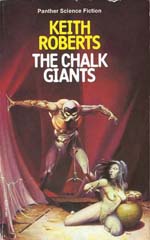
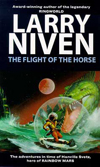
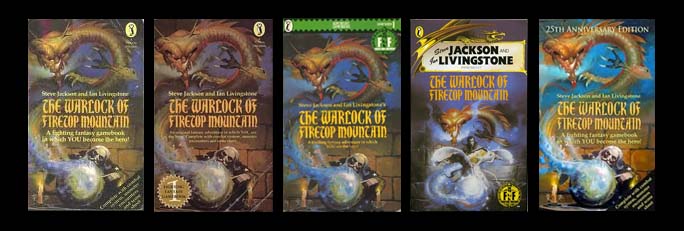
![]() "THAT" COVER . . . . . . ‘THE
WARLOCK OF FIRETOP MOUNTAIN’
"THAT" COVER . . . . . . ‘THE
WARLOCK OF FIRETOP MOUNTAIN’
![]() Although there are many internet sites, including Wikipedia,
that
purport to know the circumstances concerning the ground-breaking
illustration for the first of the ‘Fighting Fantasy’ books,
all are inaccurate since the only people who know the circumstances are
those who were there at the time: Doreen Scott, Art Editor at Puffin
Books, Philippa Dickenson, Editor, and Peter Andrew Jones himself.
Puffin had already had cover art created for the book but felt that
what was needed was a treatment by a more experienced cover artist who
was capable of creating a cover with broader market appeal. Peter, who
had known Doreen Scott ever since he produced his very first cover art
for her in the summer of 1973, was called in to provide the solution.
Although there are many internet sites, including Wikipedia,
that
purport to know the circumstances concerning the ground-breaking
illustration for the first of the ‘Fighting Fantasy’ books,
all are inaccurate since the only people who know the circumstances are
those who were there at the time: Doreen Scott, Art Editor at Puffin
Books, Philippa Dickenson, Editor, and Peter Andrew Jones himself.
Puffin had already had cover art created for the book but felt that
what was needed was a treatment by a more experienced cover artist who
was capable of creating a cover with broader market appeal. Peter, who
had known Doreen Scott ever since he produced his very first cover art
for her in the summer of 1973, was called in to provide the solution.
![]() At the cover briefing Peter was told that deadline time was
“very
limited, a mere few days”, far less than he was typically used to
having when creating covers, and Scott told him to, "Go away and come
back with something revolutionary".
At the cover briefing Peter was told that deadline time was
“very
limited, a mere few days”, far less than he was typically used to
having when creating covers, and Scott told him to, "Go away and come
back with something revolutionary".
![]() The
solution that Peter came up
with was to take an existing painting from his own personal stock that
he'd already made exploring a typical design that was popular on
American
romance story paperbacks (where frequently a book's title/logotype
appeared in the MIDDLE of the cover illustration) and which he'd
blended with
contemporary British fantasy art illustration, an approach not at all
typical on British paperbacks of the time and so was a concept he had
been developing for his own personal interest. He'd been exposed to the
design concept when given a large number of cover proofs from American
paperback companies by a client in Rotterdam who had been given them by
a leading German art agent who represented American book rights in
Europe.
The
solution that Peter came up
with was to take an existing painting from his own personal stock that
he'd already made exploring a typical design that was popular on
American
romance story paperbacks (where frequently a book's title/logotype
appeared in the MIDDLE of the cover illustration) and which he'd
blended with
contemporary British fantasy art illustration, an approach not at all
typical on British paperbacks of the time and so was a concept he had
been developing for his own personal interest. He'd been exposed to the
design concept when given a large number of cover proofs from American
paperback companies by a client in Rotterdam who had been given them by
a leading German art agent who represented American book rights in
Europe.
![]() He
took the existing painting, which he called "The Ultimate Spell", did a
little more work on it, made a
wild guess at what might be the right content and met the deadline.
He
took the existing painting, which he called "The Ultimate Spell", did a
little more work on it, made a
wild guess at what might be the right content and met the deadline.
![]() Both Scott and Dickenson
accepted the cover design willingly and unreservedly because it gave
them exactly what they had requested - an untypical and original
visually impactful approach for the English market. Subsequently
Peter’s revolutionary cover design appeared on ‘The Warlock
of Firetop Mountain’ in almost every major language market around
the world.
Both Scott and Dickenson
accepted the cover design willingly and unreservedly because it gave
them exactly what they had requested - an untypical and original
visually impactful approach for the English market. Subsequently
Peter’s revolutionary cover design appeared on ‘The Warlock
of Firetop Mountain’ in almost every major language market around
the world.
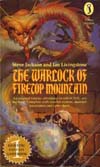
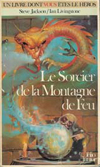
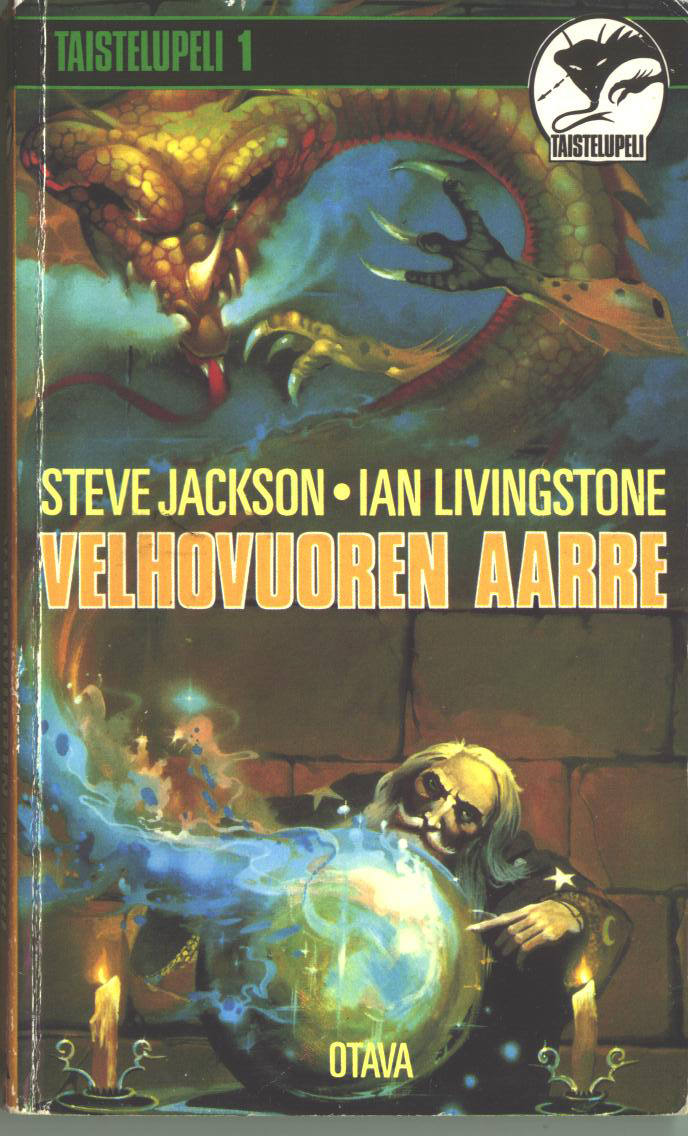
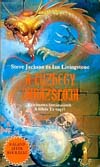
![]() However
. . . . . . AFTER the initial impact of this approach had died down
Puffin's typical cover commission policy kicked-in and commissioning
reverted to their norm, with various illustrators used to create
subsequent covers. As such the initial impact of Peter’s
"decidedly different" design approach was allowed to lapse.
However
. . . . . . AFTER the initial impact of this approach had died down
Puffin's typical cover commission policy kicked-in and commissioning
reverted to their norm, with various illustrators used to create
subsequent covers. As such the initial impact of Peter’s
"decidedly different" design approach was allowed to lapse.
![]() Ironically as the book series unfolded with various artists
creating
the covers (including Peter himself), Peter was commissioned a second
time to create a cover for ‘The Warlock of Firetop
Mountain’: this was at the instigation of Steve Jackson who was
one of the ‘Fighting Fantasy’ authors. Peter and Steve were
able to consult as to the appropriate nature of the design of the
covers’ illustrative elements (such as the Warlock himself) as a
marketing stance rather than using layout as a marketing tool, in
short, taking the approach to the marketing of the series in a full
circle.
Ironically as the book series unfolded with various artists
creating
the covers (including Peter himself), Peter was commissioned a second
time to create a cover for ‘The Warlock of Firetop
Mountain’: this was at the instigation of Steve Jackson who was
one of the ‘Fighting Fantasy’ authors. Peter and Steve were
able to consult as to the appropriate nature of the design of the
covers’ illustrative elements (such as the Warlock himself) as a
marketing stance rather than using layout as a marketing tool, in
short, taking the approach to the marketing of the series in a full
circle.
![]() Eventually, after numerous covers, Puffin branded the series
with a
distinct green banner and then subsequently with a yellow circular logo
and scroll device, closer to the genre roots of the series. Yet
ironically the 25th anniversary edition of the book, published by
Wizard books in August 2007, displayed the original cover art complete
with book title in the centre of the illustration . . . . . .
Eventually, after numerous covers, Puffin branded the series
with a
distinct green banner and then subsequently with a yellow circular logo
and scroll device, closer to the genre roots of the series. Yet
ironically the 25th anniversary edition of the book, published by
Wizard books in August 2007, displayed the original cover art complete
with book title in the centre of the illustration . . . . . .
![]() LONE WOLF & LEGENDS OF LONE WOLF
LONE WOLF & LEGENDS OF LONE WOLF
![]() The success of the ‘Fighting Fantasy’ work attracted the
attention of Paris-based publisher Editions Galimard, and as the only
non-British publisher to commission a new cover for ‘The Warlock
of Firetop Mountain’ the success of this venture evolved into a
commission to illustrate almost the entire series of author Joe Dever's
‘Lone Wolf’ role play books. This in turn led to the
original British publisher, Red Fox (originally Beaver books) licensing
the French cover art back into the UK market and subsequently, through
the UK and Commonwealth distribution chain, also commissioning new
additional covers as the series expanded.
The success of the ‘Fighting Fantasy’ work attracted the
attention of Paris-based publisher Editions Galimard, and as the only
non-British publisher to commission a new cover for ‘The Warlock
of Firetop Mountain’ the success of this venture evolved into a
commission to illustrate almost the entire series of author Joe Dever's
‘Lone Wolf’ role play books. This in turn led to the
original British publisher, Red Fox (originally Beaver books) licensing
the French cover art back into the UK market and subsequently, through
the UK and Commonwealth distribution chain, also commissioning new
additional covers as the series expanded.



![]() The
Solar Wind Picture Library also licensed these works worldwide to many
other publishers of the series, including Edizioni E Elle in Trieste,
Italy, with whom Peter had extensive involvement on a number of other
role play book series in the Italian language. Eventually even US
publisher Berkley Books commissioned Peter to design some covers late
on in their release of the series.
The
Solar Wind Picture Library also licensed these works worldwide to many
other publishers of the series, including Edizioni E Elle in Trieste,
Italy, with whom Peter had extensive involvement on a number of other
role play book series in the Italian language. Eventually even US
publisher Berkley Books commissioned Peter to design some covers late
on in their release of the series.
![]() "HEROES & VILLAINS" – A
GLOBAL DEMAND
"HEROES & VILLAINS" – A
GLOBAL DEMAND
![]() This success, together with the global distribution that the
‘Fighting Fantasy’ editions had enjoyed, meant that when
Peter was asked by Target Games of Sweden to create artwork for their
‘Kult’ adult role play game, his games-based art had become
probably the most globally-distributed solo artist's art in the
role play genre.
This success, together with the global distribution that the
‘Fighting Fantasy’ editions had enjoyed, meant that when
Peter was asked by Target Games of Sweden to create artwork for their
‘Kult’ adult role play game, his games-based art had become
probably the most globally-distributed solo artist's art in the
role play genre.
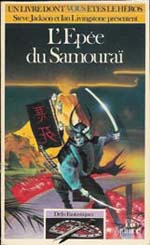
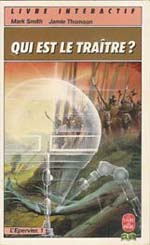
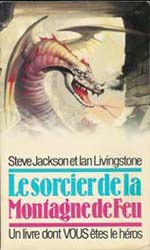
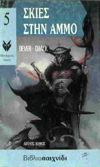
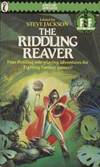
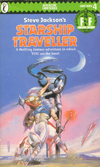
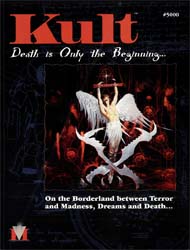
![]()
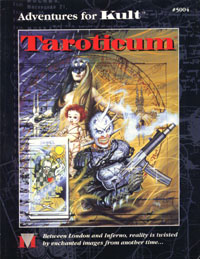
![]()
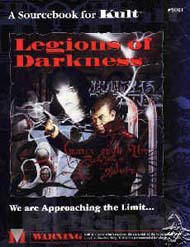
![]() The
art that appeared on the book covers also led to other product uses
such as Games Workshop's ‘White Dwarf Magazine’ and some
board game box art.
The
art that appeared on the book covers also led to other product uses
such as Games Workshop's ‘White Dwarf Magazine’ and some
board game box art.
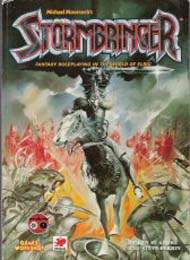
![]()
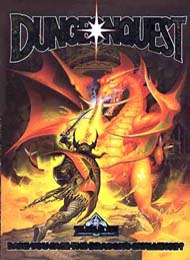
![]() Whilst
the role play art had assumed a very large part of Peter’s studio
output it was by no means the only activity during this long period . .
. . . .
Whilst
the role play art had assumed a very large part of Peter’s studio
output it was by no means the only activity during this long period . .
. . . .
![]() "I DON'T DO MOVIES"
"I DON'T DO MOVIES"
![]() The extent of his workload meant that Peter made the decision
in 1978
that he would never work on a movie, thus avoiding the disruption it
would bring. He even told fellow science fiction artist Chris Foss
(‘Superman’ and ‘Alien’), “That's your
thing, Chris, I'll stick to cover art".
The extent of his workload meant that Peter made the decision
in 1978
that he would never work on a movie, thus avoiding the disruption it
would bring. He even told fellow science fiction artist Chris Foss
(‘Superman’ and ‘Alien’), “That's your
thing, Chris, I'll stick to cover art".
![]() But
the occasional film posters found their way into his studio's
output, and his poster art for ‘The Sword and the Sorcerer’
and ‘Alligator II’ could be seen not only at his local
cinema in Wimbledon (of tennis fame) but also “All over the New
York subway", to quote Group One Films. Peter also worked on television
projects including: ‘The Two Ronnies Christmas Special’, a
two year stint on the BBC's ‘Captain Zep - Space
Detective’, ‘The Tripods’, ‘Horizon’, and
‘BBC News’ programmes. He was a key illustrator in The
BBC's development of ‘colour-separated overlay technique’
(more commonly called ‘bluescreen’) and later provided
these skills for advertising projects for clients such as Harrods, as
well as on industrial films for companies like Ford and Plessy. At
various points during this period Trevor Goring (comic art) and Peter
Western (animation), both ex-St.Martins School of Art friends, joined
him in an extended studio arrangement they called ‘Smart
Moves’ to provide a multi-discipline supply of talent to meet
this new demand.
But
the occasional film posters found their way into his studio's
output, and his poster art for ‘The Sword and the Sorcerer’
and ‘Alligator II’ could be seen not only at his local
cinema in Wimbledon (of tennis fame) but also “All over the New
York subway", to quote Group One Films. Peter also worked on television
projects including: ‘The Two Ronnies Christmas Special’, a
two year stint on the BBC's ‘Captain Zep - Space
Detective’, ‘The Tripods’, ‘Horizon’, and
‘BBC News’ programmes. He was a key illustrator in The
BBC's development of ‘colour-separated overlay technique’
(more commonly called ‘bluescreen’) and later provided
these skills for advertising projects for clients such as Harrods, as
well as on industrial films for companies like Ford and Plessy. At
various points during this period Trevor Goring (comic art) and Peter
Western (animation), both ex-St.Martins School of Art friends, joined
him in an extended studio arrangement they called ‘Smart
Moves’ to provide a multi-discipline supply of talent to meet
this new demand.
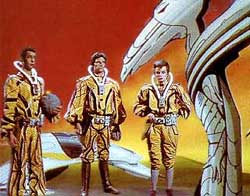
(c) BBC
![]() THE "LEGENDARY" ILLUSTRATOR
(‘Role player’ magazine)
THE "LEGENDARY" ILLUSTRATOR
(‘Role player’ magazine)
![]() And so it was, along with these periodic excursions into
moving media
projects, that from the mid 1970s through the 1980s and late 1990s,
Peter had created cover art for literally hundreds of science fiction,
fantasy and role playing products for publishers around the world.
And so it was, along with these periodic excursions into
moving media
projects, that from the mid 1970s through the 1980s and late 1990s,
Peter had created cover art for literally hundreds of science fiction,
fantasy and role playing products for publishers around the world.


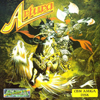
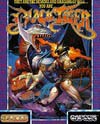

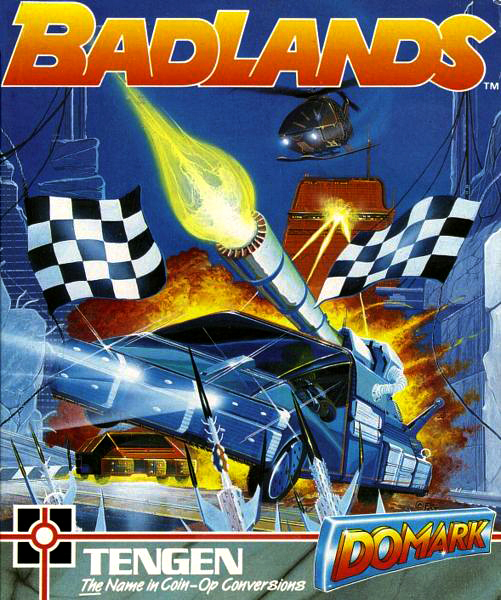
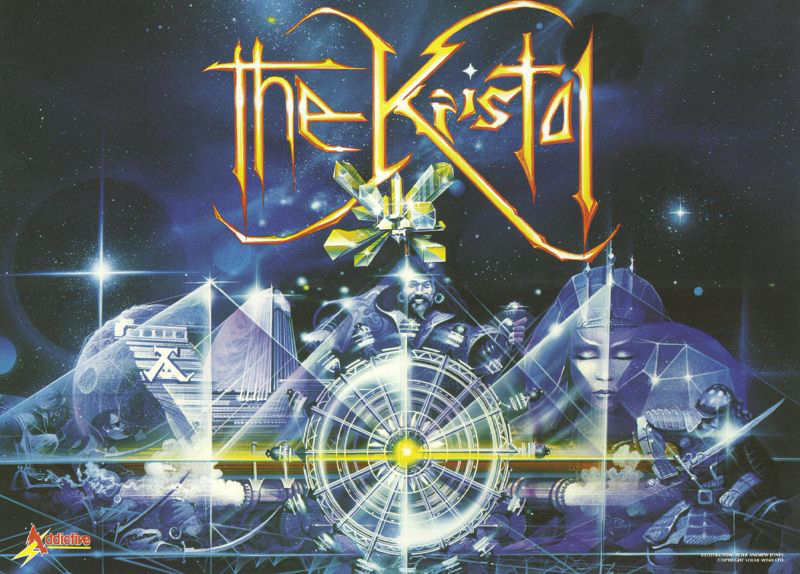
![]() PAINTED EAGLES’ &
‘BLUEBIRDS OVER
PAINTED EAGLES’ &
‘BLUEBIRDS OVER
![]() In 1990 Peter decided that he had let his aviation art lapse
for too
long and his company entered into a charitable licensing arrangement
with the RAF Benevolent Fund in the UK to create a number of paintings
under the project title ‘Bluebirds Over’. These chronicled
the events of the Battle of Britain aerial conflict in a tri-partite
arrangement between Peter Andrew Jones, the RAF Benevolent Fund, and
Formans Corporate Calendars in Nottingham. Instrumental in the accuracy
of the research were General der Jagdflieger: Adolf Galland, and
Squadron Leader Peter Townsend (George Cross): Peter corresponded and
conversed with both of these prominent men, along with other WWII
veterans such as George Bush Senior, a pilot from the WWII Pacific Area
conflict.
In 1990 Peter decided that he had let his aviation art lapse
for too
long and his company entered into a charitable licensing arrangement
with the RAF Benevolent Fund in the UK to create a number of paintings
under the project title ‘Bluebirds Over’. These chronicled
the events of the Battle of Britain aerial conflict in a tri-partite
arrangement between Peter Andrew Jones, the RAF Benevolent Fund, and
Formans Corporate Calendars in Nottingham. Instrumental in the accuracy
of the research were General der Jagdflieger: Adolf Galland, and
Squadron Leader Peter Townsend (George Cross): Peter corresponded and
conversed with both of these prominent men, along with other WWII
veterans such as George Bush Senior, a pilot from the WWII Pacific Area
conflict.

![]() As
a result of this the project an internet e-zine entitled ‘Painted
Eagles’ evolved. It had a substantial subscriber list.
As
a result of this the project an internet e-zine entitled ‘Painted
Eagles’ evolved. It had a substantial subscriber list.
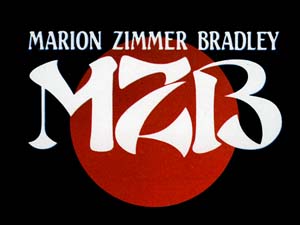
![]() MARION ZIMMER BRADLEY
MARION ZIMMER BRADLEY
![]() By the late 1980s Peter’s reputation as a book cover artist
had
long passed the point where the UK's leading bookseller, WH Smith,
would automatically take "any book with a Peter Jones cover" a view
they adopted even as early as the 1976 and so it was that
Arrow Books in London commissioned him to visually repackage an
existing book series to give it a “second life”: an
entirely different visual branding treatment would be required.
By the late 1980s Peter’s reputation as a book cover artist
had
long passed the point where the UK's leading bookseller, WH Smith,
would automatically take "any book with a Peter Jones cover" a view
they adopted even as early as the 1976 and so it was that
Arrow Books in London commissioned him to visually repackage an
existing book series to give it a “second life”: an
entirely different visual branding treatment would be required.
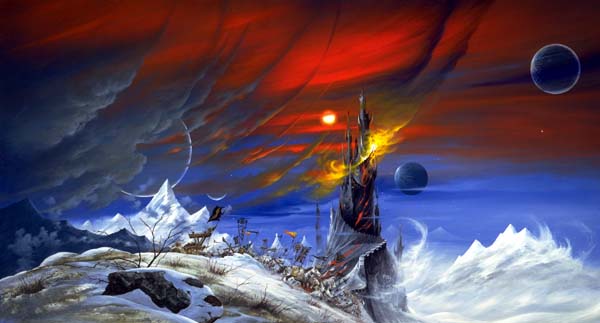
![]() The
Marion Zimmer Bradley series of books was given a broader market appeal
through a combination of genre market illustration, main market layout,
and logotype: a similar design ethos to that employed by Peter when
asked to "do something revolutionary" to launch Puffin's
‘Fighting Fantasy’ series in the early 1980s. At the
conclusion of the MZB project, when told by the publisher that the
revamped series "had done very well and we are very pleased with the
sales", Peter realised his skills had evolved to a level where working
on commission for clients could no longer provide enough scope for his
creativity.
The
Marion Zimmer Bradley series of books was given a broader market appeal
through a combination of genre market illustration, main market layout,
and logotype: a similar design ethos to that employed by Peter when
asked to "do something revolutionary" to launch Puffin's
‘Fighting Fantasy’ series in the early 1980s. At the
conclusion of the MZB project, when told by the publisher that the
revamped series "had done very well and we are very pleased with the
sales", Peter realised his skills had evolved to a level where working
on commission for clients could no longer provide enough scope for his
creativity.
![]() 400 MILLION PEOPLE
400 MILLION PEOPLE
![]() One fan calculated that “a minimum of 400 million people”
have held Peter’s art in their hands since his first book cover
for Puffin Books in 1973. Publishers worldwide had come to rely on his
visual marketing skills to a point where Peter questioned to what
extent he needed to be involved at all with them, especially when the
considerable size of his fan base and internet subscriber lists were
taken into consideration.
One fan calculated that “a minimum of 400 million people”
have held Peter’s art in their hands since his first book cover
for Puffin Books in 1973. Publishers worldwide had come to rely on his
visual marketing skills to a point where Peter questioned to what
extent he needed to be involved at all with them, especially when the
considerable size of his fan base and internet subscriber lists were
taken into consideration.
![]() Then, during a conversation with a friend in London in the
late 1990s,
the friend said (about Peter’s fame as a fantasy artist),"Where
do you go from up, Peter?" Indeed, Octopus books wrote in a science
fiction art encyclopedia that he was, "The most successful (SF) artist
working in Britain". Peter and his friend then, as an exercise,
multiplied the number of book covers he had painted by the print runs
of the books, second hand use, library use and so on, and then added in
viewers of TV programmes he had worked on, movie posters, software
games etc. The result amazed them: it ran into millions and millions of
people who had seen Peter’s work. He had never once thought about
that.
Then, during a conversation with a friend in London in the
late 1990s,
the friend said (about Peter’s fame as a fantasy artist),"Where
do you go from up, Peter?" Indeed, Octopus books wrote in a science
fiction art encyclopedia that he was, "The most successful (SF) artist
working in Britain". Peter and his friend then, as an exercise,
multiplied the number of book covers he had painted by the print runs
of the books, second hand use, library use and so on, and then added in
viewers of TV programmes he had worked on, movie posters, software
games etc. The result amazed them: it ran into millions and millions of
people who had seen Peter’s work. He had never once thought about
that.
![]() Because he had been so busy servicing client's needs, and had
built his
career based on what other people, such as art school tutors and
clients, had suggested would be commercially viable, he had never taken
the opportunity to think about what else he might have wanted to paint.
Indeed, several other areas of interest, including aviation and
wildlife art, had long been eclipsed and even extinguished by the
constant demand for his fantasy art. Peter’s art had been
produced on almost every type of publication possible and by almost
every major publisher around the world, but he decided that this work
with publishers had in fact denied him the opportunity to work on his
own projects which would allow his creativity to develop even further.
Being famous for over a quarter of a century had eclipsed the
opportunity to paint other things, and although he had painted other
things professionally, such as aviation subjects, he had not done so as
much as he might have liked if he had ever stopped to think about it.
Because he had been so busy servicing client's needs, and had
built his
career based on what other people, such as art school tutors and
clients, had suggested would be commercially viable, he had never taken
the opportunity to think about what else he might have wanted to paint.
Indeed, several other areas of interest, including aviation and
wildlife art, had long been eclipsed and even extinguished by the
constant demand for his fantasy art. Peter’s art had been
produced on almost every type of publication possible and by almost
every major publisher around the world, but he decided that this work
with publishers had in fact denied him the opportunity to work on his
own projects which would allow his creativity to develop even further.
Being famous for over a quarter of a century had eclipsed the
opportunity to paint other things, and although he had painted other
things professionally, such as aviation subjects, he had not done so as
much as he might have liked if he had ever stopped to think about it.
![]() FROM URBAN TO RURAL
FROM URBAN TO RURAL
![]() As Peter began to think about what he might like to do about
this,
including possibly live somewhere new, his wife said, "I know a place"
(from her childhood). They duly went for a week to Church Stretton in
Shropshire, a beautiful old market town that nestles amongst some
pretty stunning hills. He was astonished by the radical contrast to
everything urban that he knew so well. There was only one house on the
market and coincidentally it was positioned in such a way that whilst
it was in the countryside it had urban elements to it that were very
familiar to where he was living in London, so entirely based on
instinct alone he bought it. Thus in 1999 he closed his Wimbledon
studio and company, Solar Wind Ltd, and moved to rural Shropshire.
As Peter began to think about what he might like to do about
this,
including possibly live somewhere new, his wife said, "I know a place"
(from her childhood). They duly went for a week to Church Stretton in
Shropshire, a beautiful old market town that nestles amongst some
pretty stunning hills. He was astonished by the radical contrast to
everything urban that he knew so well. There was only one house on the
market and coincidentally it was positioned in such a way that whilst
it was in the countryside it had urban elements to it that were very
familiar to where he was living in London, so entirely based on
instinct alone he bought it. Thus in 1999 he closed his Wimbledon
studio and company, Solar Wind Ltd, and moved to rural Shropshire.
![]() Not being at all sure exactly what this new life might
entail, he
continued selling his existing art, including fantasy and science
fiction paintings, for a year or so, both as reproduction rights to
publishers and the original art over the internet to collectors –
something he had already been doing from his London studio.
Not being at all sure exactly what this new life might
entail, he
continued selling his existing art, including fantasy and science
fiction paintings, for a year or so, both as reproduction rights to
publishers and the original art over the internet to collectors –
something he had already been doing from his London studio.
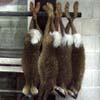
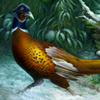
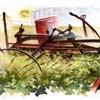
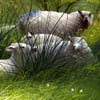
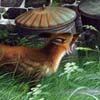
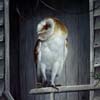
![]() Then
Peter met a local tea room owner in Church Stretton who had a dreadful
selection of greetings cards for sale and at his suggestion Peter set
out to, "Do something about it". He painted a number of rural scenes,
wildlife, landscapes and so on, and made some greetings cards and found
that he enjoyed the experience. Then the same tea room owner suggested
he put the pictures into a handmade sketchbook he had made and said,
"Then I can sell it". As Peter had already set up the studio to sell
limited edition prints the addition of greetings cards and handmade
books made it a full range publishing set up.
Then
Peter met a local tea room owner in Church Stretton who had a dreadful
selection of greetings cards for sale and at his suggestion Peter set
out to, "Do something about it". He painted a number of rural scenes,
wildlife, landscapes and so on, and made some greetings cards and found
that he enjoyed the experience. Then the same tea room owner suggested
he put the pictures into a handmade sketchbook he had made and said,
"Then I can sell it". As Peter had already set up the studio to sell
limited edition prints the addition of greetings cards and handmade
books made it a full range publishing set up.
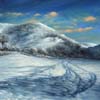
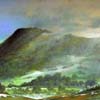
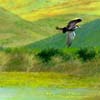
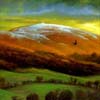
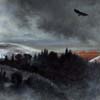
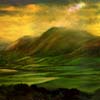
![]() BACK TO THE FUTURE
BACK TO THE FUTURE
![]() Then, on a trip to London to deliver a private commission to
a
collector, Peter was astonished to discover that he was
‘reacting’: becoming inspired by things he saw around him,
something he had never experienced whilst he actually lived there. So
he started visiting London and painting pictures of the area.
Then, on a trip to London to deliver a private commission to
a
collector, Peter was astonished to discover that he was
‘reacting’: becoming inspired by things he saw around him,
something he had never experienced whilst he actually lived there. So
he started visiting London and painting pictures of the area.
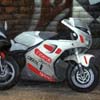
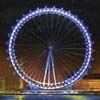

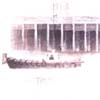
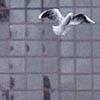
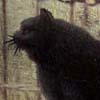
![]() This
meant that the business now was selling three genres of art, no longer
exclusively his fantasy art, and it was both local, rural, urban, and
internet related.
This
meant that the business now was selling three genres of art, no longer
exclusively his fantasy art, and it was both local, rural, urban, and
internet related.
![]() This caused Peter to think back over his working life as well
as back
into his art school, and even school years, as to what kind of things
he had been interested in painting originally. He realised with some
shock that he had actually been painting a range of subjects over
recent decades but had done so by coating them in a science fiction and
fantasy wrapper. By the time he had added his aviation art, kept aside
as a private charitable project for many years, that extended the
publishing company's range to four genres, and when he then considered
other areas he had wrapped the science fiction cloak around it ran to
eight and eventually twelve when allowed to function in their own right.
This caused Peter to think back over his working life as well
as back
into his art school, and even school years, as to what kind of things
he had been interested in painting originally. He realised with some
shock that he had actually been painting a range of subjects over
recent decades but had done so by coating them in a science fiction and
fantasy wrapper. By the time he had added his aviation art, kept aside
as a private charitable project for many years, that extended the
publishing company's range to four genres, and when he then considered
other areas he had wrapped the science fiction cloak around it ran to
eight and eventually twelve when allowed to function in their own right.
 ATELIER
ATELIER
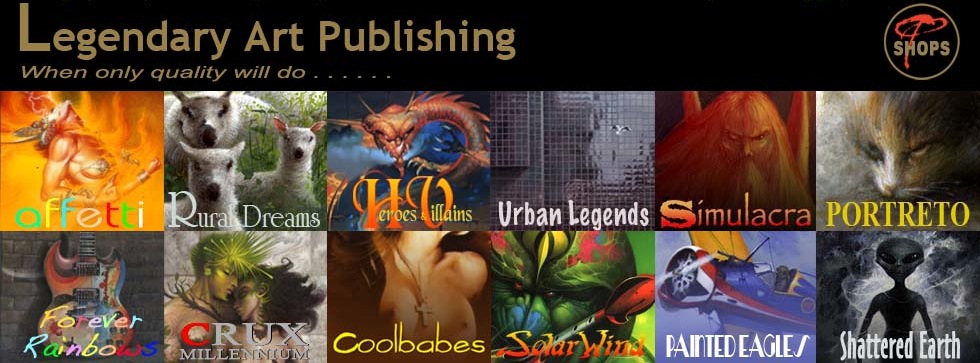

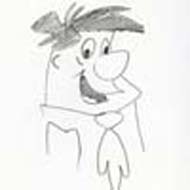
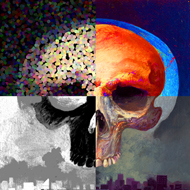
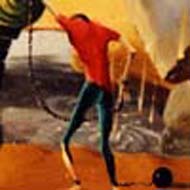
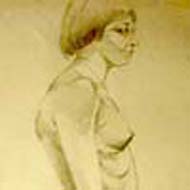
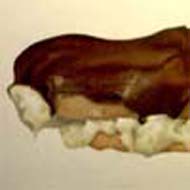
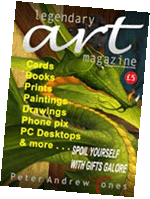
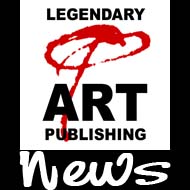

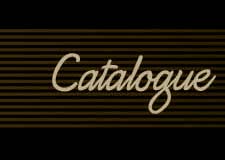
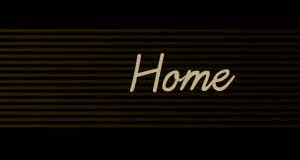

© Copyright Peter Andrew Jones 1973-2009, All rights reserved including moral rights and throughout cyberspace.
Site designed built & maintained by Infinite Eye Studio.
